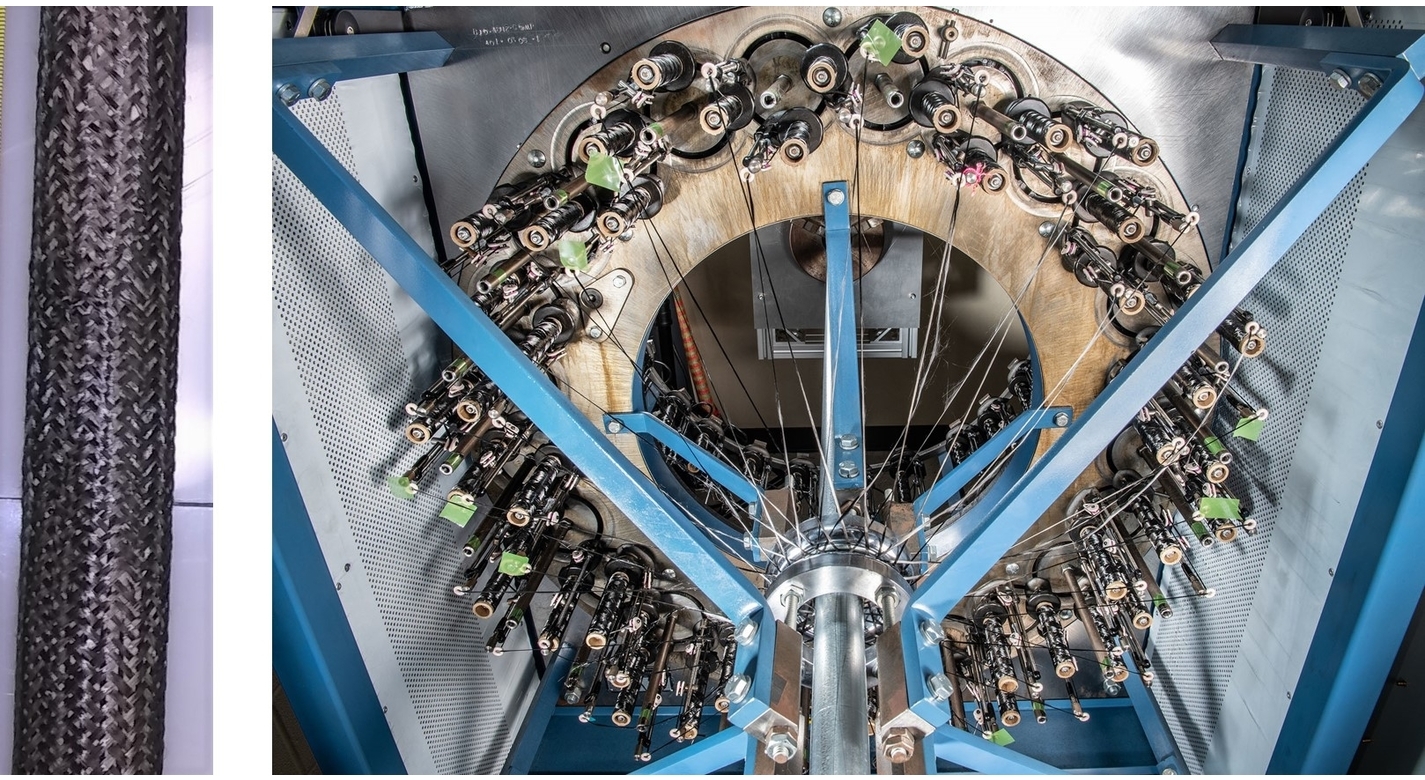While the word "nanomaterials" may suggest an idea of something very small, the potential they have is tremendous. NASA has developed a portfolio of nanomaterial technologies that push the boundaries of their strength, thermal resistance, chemical resistance, and structural longevity. The following are a few examples of technologies in this area that are ready to be licensed.

Carbon Fiber-Carbon Nanotube Yarn Hybrid Reinforcement
Historically, polymer matrix composites (PMCs) have provided insufficient toughness for some aerospace structures. Innovators at NASA's Glenn Research Center have developed a toughened hybrid reinforcement material that improves PMCs' toughness and damping properties, enhancing impact resistance, fatigue life, and structural longevity. The new material is made from carbon fiber and carbon nanotube (CNT) yarn. This new material could be utilized in aircraft components, PMC auto parts, prosthetics, high-pressure gas storage vessels, wind turbine blades, and drone components.
Soft Magnetic Composite Capable of Operating at Temperatures 200°C Higher
Present state-of-the-art soft magnetic nanocomposites have an upper-temperature limit of 150°C before core loss occurs. Innovators at NASA's Glenn Research Center have increased the operating temperature range to 400°C with minimal increase in core loss by adjusting the composition and fabrication. This development expands the application of soft magnetic material by reducing the need for cooling and enabling efficient power electronics that are smaller and lighter. Among other applications, this invention could help power electronics for electrified aircraft systems.

Stronger, Thermal and Chemical Resistant Nanoparticle-Containing Thermoplastic Composite Laminates
Thermoplastic composites are high-strength material systems that can be used in various fields, such as aircraft, tanks, armored vehicles, automotive components, sporting goods, and industrial and medical devices. Scientists at NASA's Langley Research Center have developed nanoparticle-containing thermoplastic composite laminates, which have improved toughness, strength, and conductivity as well as thermal, flame, moisture, and chemical resistance. The composite laminates also boast advantageous crystalline and amorphous properties, as well as improved permeation resistance and radiation absorption.
If you're interested in learning about more patented nanomaterials from NASA's labs, please click here.
Hear about all of our newest technologies and upcoming events by signing up for our newsletter and following us on Linkedin, Facebook, and Twitter.



